
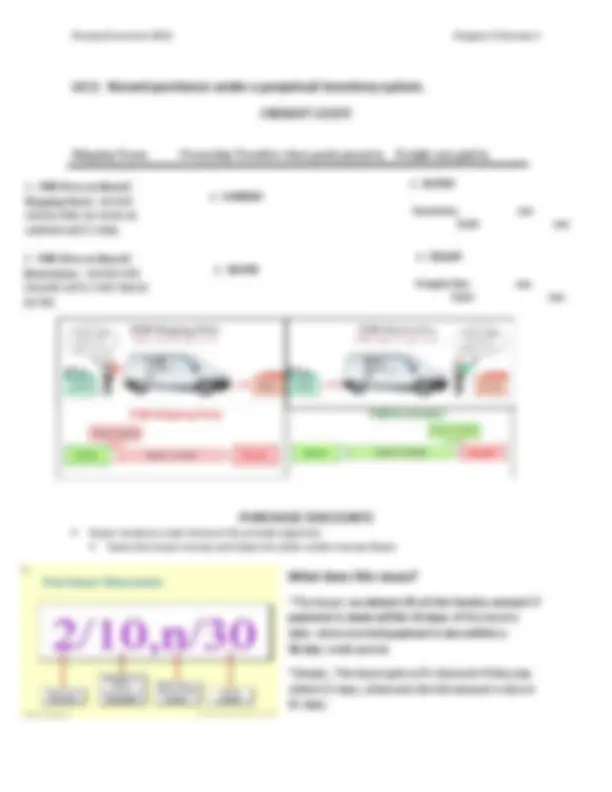
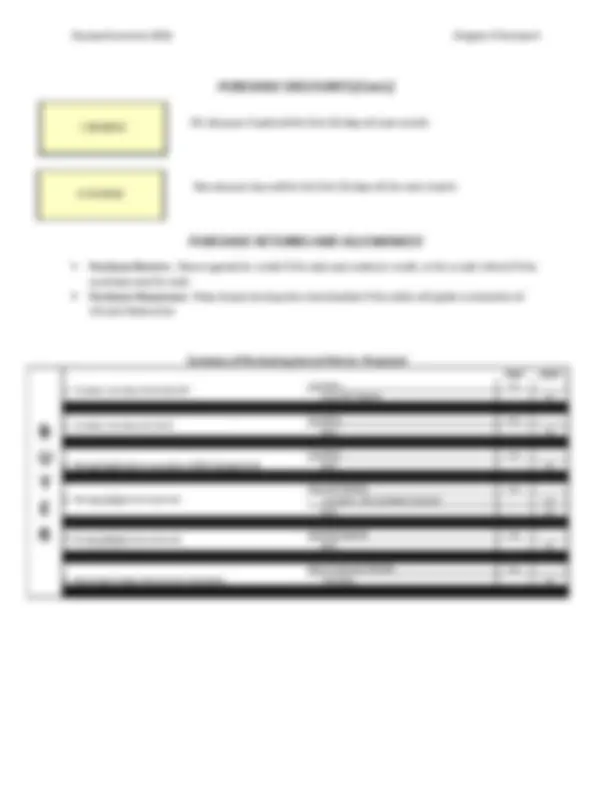
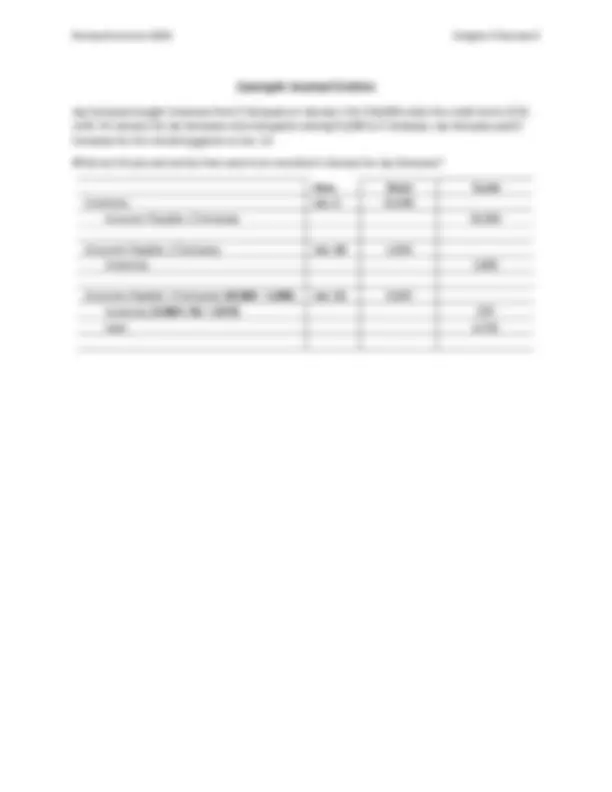
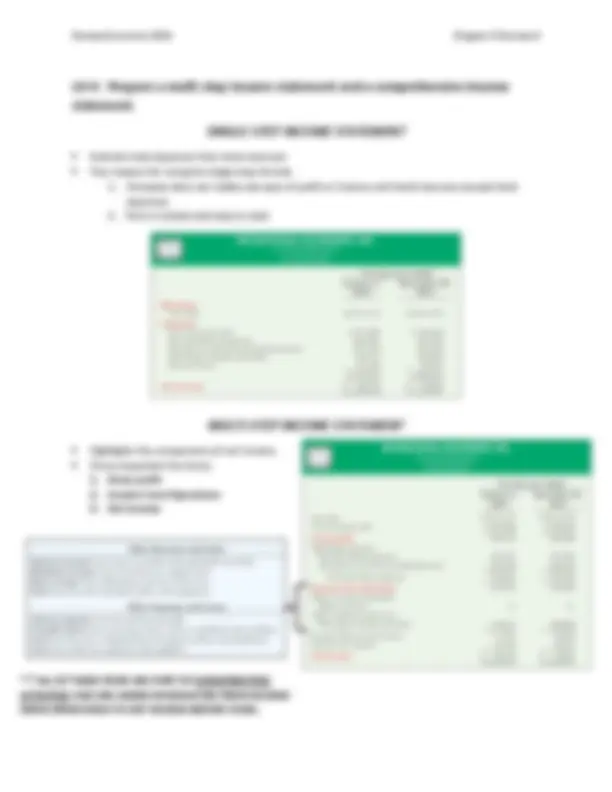
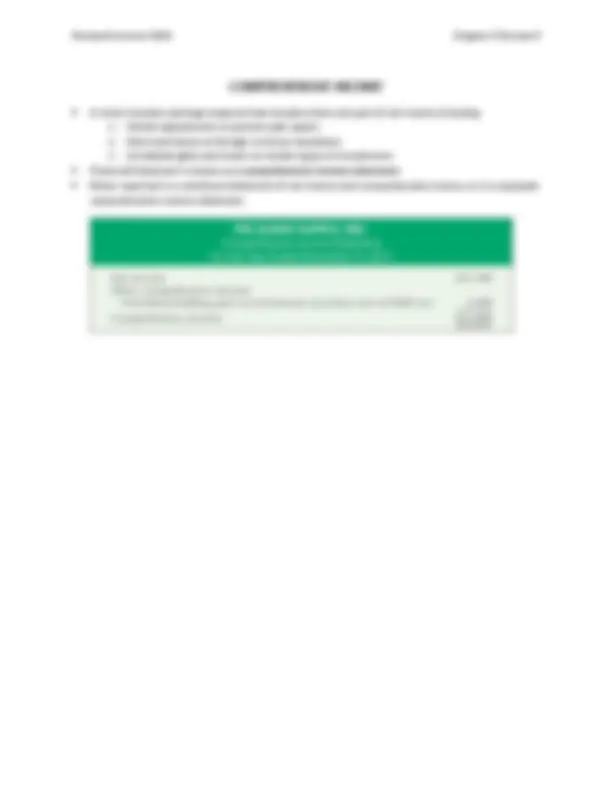
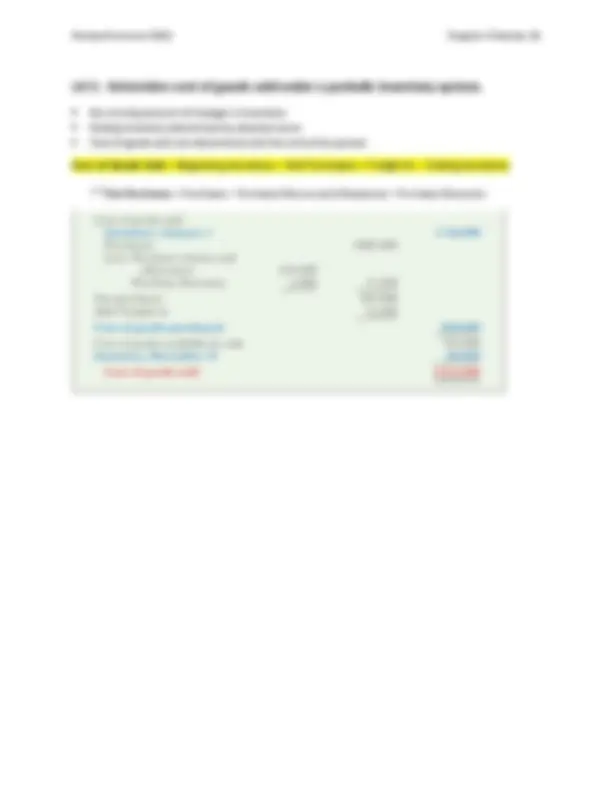


Study with the several resources on Docsity

Earn points by helping other students or get them with a premium plan


Prepare for your exams
Study with the several resources on Docsity

Earn points to download
Earn points by helping other students or get them with a premium plan
Community
Ask the community for help and clear up your study doubts
Discover the best universities in your country according to Docsity users
Free resources
Download our free guides on studying techniques, anxiety management strategies, and thesis advice from Docsity tutors
An overview of merchandising operations, inventory systems, and the calculation of cost of goods sold under a perpetual inventory system. It covers topics such as sales revenue, cost of goods sold, perpetual and periodic inventory systems, freight costs, purchase discounts, and journal entries for purchases and sales. It also includes examples of journal entries and formulas for calculating gross profit and net sales.
What you will learn
Typology: Study notes
1 / 11

This page cannot be seen from the preview
Don't miss anything!







Primary source of revenue for merchandisers like Walmart that buy and sell goods is referred to as sales revenue. Cost of goods sold is the total cost of merchandise sold during the period. o It is an EXPENSE that is directly related to the revenue recognized from the sale of goods. Ex: Company C, a retailer, bought chairs from a wholesaler for $15 each. Company C then sold the chairs to their customers for $20 each. The $20 represents Company C’s sales revenue for each chair. The $15 that Company C spent on each chair represents Company C’s cost of goods sold and is recognized when each chair is sold to customers.
FLOW OF COSTS Companies use either a perpetual inventory system or a periodic inventory system to account for inventory.
1. Perpetual : CONTINUOUSLY updates accounting records for merchandising transactions – SPECIFICALLY reduction of inventory and increasing cost of goods sold. Advantages of perpetual inventory system. 1. Traditionally used for merchandise with high unit values. 2. Shows the quantity and cost of the inventory that should be on hand at any time. 3. Provides better control over inventories than a periodic system. 2. Periodic : updates the accounting records for merchandise transactions at the END OF A PERIOD. Cost of goods sold determined by count at the end of the accounting period. ***Key Formula… Cost of Goods Sold = Beginning Inventory + Net Purchases – Ending Inventory Beginning Inventory $ 200, Add: Purchases, net $ 900, Goods available for sale $ 1,100, Less: Ending Inventory $ 400, Cost of Goods Sold $ 700,
Purchase Returns: Return goods for credit if the sale was made on credit, or for a cash refund if the purchase was for cash. Purchase Allowances: May choose to keep the merchandise if the seller will grant a reduction of the purchase price. 1% discount if paid within first 10 days of next month. Net amount due within the first 10 days of the next month. DEBIT CREDIT Inventory xxx Accounts Payable xxx Inventory xxx Cash xxx Inventory xxx Cash xxx Accounts Payable xxx Inventory (For purchase discount) xxx Cash xxx Accounts Payable xxx Cash xxx Cash or Accounts Payable xxx Inventory xxx
Example Journal Entries Jay Company bought inventory from Z Company on January 1 for $10,000 under the credit terms 3/15, n/60. On January 10 , Jay Company returned goods costing $1,000 to Z Company. Jay Company paid Z Company for the remaining goods on Jan. 12. What are the journal entries that need to be recorded in January for Jay Company? Date Debit Credit Inventory Jan. 1 10, Accounts Payable- Z Company 10, Accounts Payable- Z Company Jan. 10 1, Inventory 1, Accounts Payable- Z Company (10,000 – 1,000) Jan. 12 9, Inventory (9,000 × 3% = $270) 270 Cash 8,
Example Journal Entries Jay Company sold goods costing $6,000 to X Company for $10,000 on March 1 under the terms 2/10, net 30. On March 5, X Company returned goods to Jay Company with a selling price of $3, and a cost of $1,800. On March 10, Jay Company received payment from X Company for the remainder of the goods. What are the journal entries that need to be recorded on in March for Jay Company? Date Debit Credit Accounts Receivable- X Company Mar. 1 10, Sales Revenue 10, Cost of Goods Sold Mar. 1 6 , Inventory 6 , Sales Returns and Allowances Mar. 5 3, Accounts Receivable- X Company 3, Inventory Mar. 5 1, Cost of Goods Sold 1, Cash Mar. 10 6, Sales Discounts (7,000 × 2% = $140) 140 Accounts Receivable- X Company (10,000 - 3,000) 7,
LO 4: Prepare a multi-step income statement and a comprehensive income statement. SINGLE-STEP INCOME STATEMENT Subtract total expenses from total revenues Two reasons for using the single-step format:
LO 5: Determine cost of goods sold under a periodic inventory system. No running account of changes in inventory. Ending inventory determined by physical count. Cost of goods sold not determined until the end of the period.
*** Net Purchases = Purchases – Purchase Returns and Allowances – Purchase Discounts
LO 6: Compute and analyze gross profit rate and profit margin. GROSS PROFIT RATE Gross Profit = Net Sales Revenue – Cost of Goods Sold Measures the margin by which selling price exceeds cost of goods sold. Gross Profit Rate of 20% means that for every $1 of sales, a company keeps $0.20 after paying for their inventory (cost of goods sold) PROFIT MARGIN RATIO Measures the extent by which selling price covers all expenses (including cost of goods sold). Profit Margin Ratio of 20% means that for every $1 of sales, a company keeps $0.20 after paying for ALL expenses. QUALITY OF EARNINGS RATIO A measure significantly less than 1 suggests that a company may be using more aggressive accounting techniques in order to accelerate income recognition. A measure significantly greater than 1 suggests that a company is using conservative accounting techniques which cause it to delay the recognition of income.